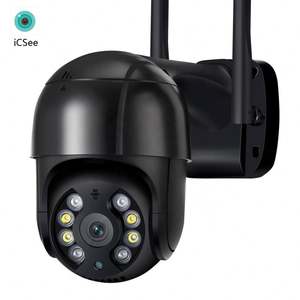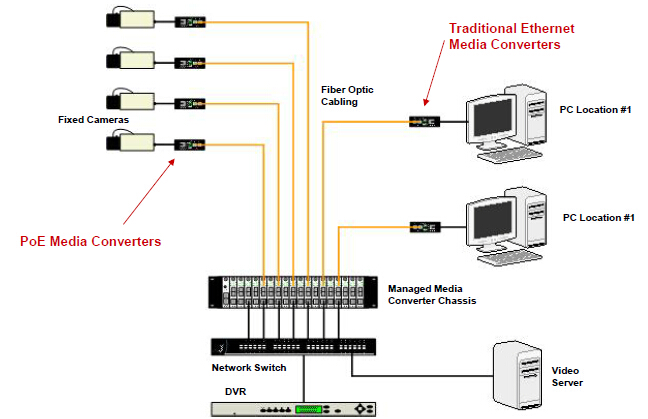Leading Factors to Select CCTV Cameras With Fiber Optic Outcome for Trustworthy Security
In the advancing landscape of monitoring modern technology, the choice of CCTV cameras with fiber optic outcome presents an engaging case for dependability and efficacy. As the demand for high-quality monitoring continues to increase, recognizing the cost-effectiveness and versatility of these installments ends up being extremely important.
Superior Image Top Quality

This improved image top quality is particularly crucial in setups calling for precise surveillance, such as banks, airports, and critical facilities. The high transmission capacity of fiber optic innovation sustains advanced functions like high-def video clip and dynamic variety, enabling far better visibility in low-light conditions.

Extended Transmission Range
One of the considerable benefits of CCTV video cameras with fiber optic result is their capacity for prolonged transmission range. Unlike traditional copper cord systems, which are restricted by signal degradation over cross countries, fiber optic technology enables for the transmission of high-grade video signals over several kilometers without loss of high quality. This capacity is particularly useful for huge centers, campuses, or urban atmospheres where security insurance coverage is important.
Making use of optical fiber in CCTV systems makes it possible for smooth integration across comprehensive locations, promoting the release of cameras in remote locations that would otherwise be challenging to link. This prolonged transmission range is not just helpful for scalability yet additionally for the versatility in system style. Installers can tactically put cams to maximize insurance coverage, making certain that essential locations are checked effectively.
Moreover, the capacity to cover cross countries without the demand for repeaters or extra devices decreases general setup complexity and costs. fence detection system. Because of this, organizations and companies can carry out robust surveillance solutions that keep high efficiency over huge areas, enhancing security methods and operational efficiency. In recap, the extensive transmission distance offered by fiber optic output stands as an engaging reason to choose these innovative CCTV systems for trustworthy monitoring
Enhanced Disturbance Resistance
The sophisticated innovation of fiber optic output not just helps with extended transmission ranges but also uses enhanced disturbance resistance. Fiber optic cords transmit information as light signals with glass or plastic fibers, making them naturally navigate to this site immune to electromagnetic disturbance (EMI) and radio frequency disturbance (RFI) This characteristic is specifically helpful in atmospheres where digital gadgets may create sound, such as industrial setups or densely inhabited urban areas.
Unlike traditional copper wires, which can function as antennas and get unwanted signals that deteriorate video clip quality, optical fiber keep signal integrity over fars away. This ensures that the monitoring footage caught continues to be clear and reputable, no matter of external electro-magnetic disruptions. Additionally, fiber optic cords are less vulnerable to indicate loss as a result of attenuation, enabling for high-quality video transmission even in tough problems.
Additionally, using optical fiber contributes to overall system safety, as the signals can not be conveniently tapped or disrupted, minimizing the threat of unauthorized access. By investing in CCTV cams with fiber optic result, customers can enjoy exceptional performance and comfort, understanding that their security system is resistant versus interference and capable of delivering consistent, top notch video.
Cost-Effectiveness Over Time
Over time, the cost-effectiveness of next page CCTV cameras with fiber optic result comes to be significantly evident. While the preliminary investment may be more than standard copper-based systems, the lasting monetary advantages considerably offset this difference. Fiber optic technology offers greater durability and reduced upkeep expenses, leading to fewer replacements and repairs over the lifespan of the cameras.
One of the substantial cost-saving aspects is the decreased risk of signal destruction over long ranges. Fiber optics maintain high-grade video transmission, which minimizes the demand for signal boosters and additional tools that can drive up complete costs. Furthermore, the strength of fiber cable televisions versus environmental problems implies they are less most likely to suffer damages from climate, insects, or electromagnetic disturbance, converting to reduced replacement rates.
Furthermore, the power efficiency of fiber optic systems contributes to lowered operational expenses. These electronic cameras usually call for much less power to operate compared to standard systems, hence lowering electrical energy costs over time. When integrated with the possibility for better safety and security outcomes, the general return on financial investment for over here CCTV cameras with fiber optic output clearly demonstrates their economical benefits in reliable surveillance services.
Versatile Setup Choices
With a variety of functional installment alternatives, CCTV cameras equipped with fiber optic output can be perfectly integrated into various environments. Their lightweight design and flexibility in mounting configurations enable installations in both indoor and exterior setups, adjusting to the certain demands of any type of monitoring job.
From industrial residential properties to property locations, fiber optic CCTV systems can be tactically placed to take full advantage of protection while reducing blind spots. The ability to mount these cams at varying heights and angles boosts their performance in checking essential locations. The long-distance transmission capabilities of fiber optics reduce the demand for repeaters, therefore streamlining setup in expansive areas.
Furthermore, these video cameras can be integrated with existing framework, such as poles or constructing exteriors, which provides a cost-effective remedy for upgrading surveillance systems without considerable restorations. Their resilience to ecological elements additionally makes fiber optic video cameras suitable for testing places, consisting of commercial sites or locations with high electromagnetic interference.
Conclusion
